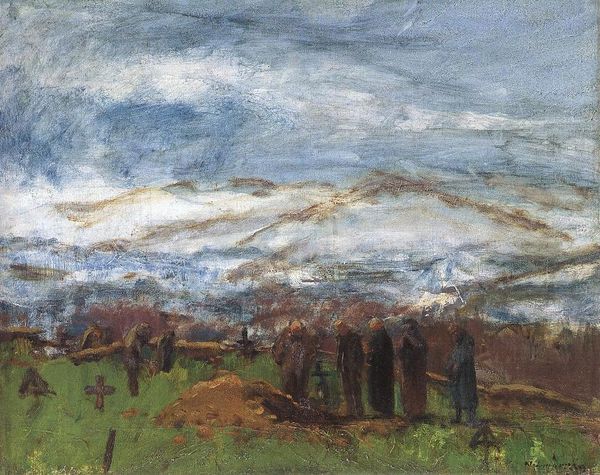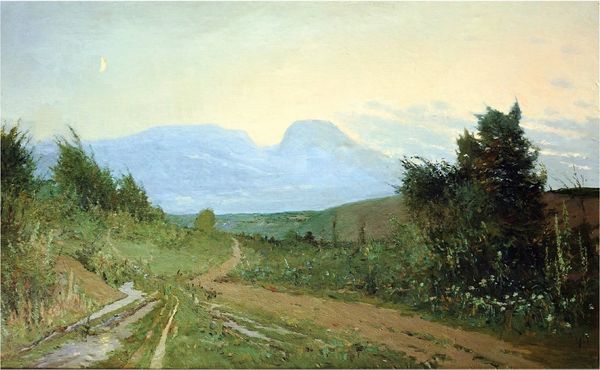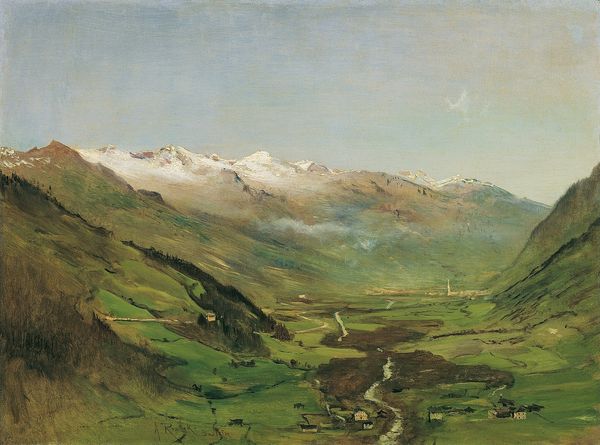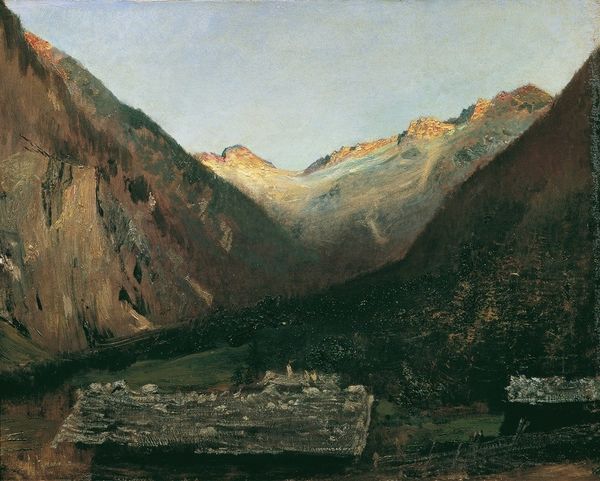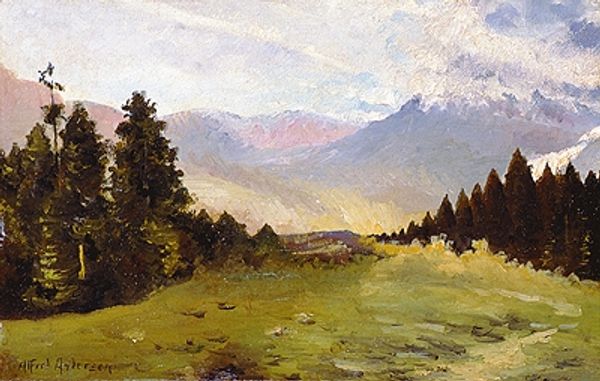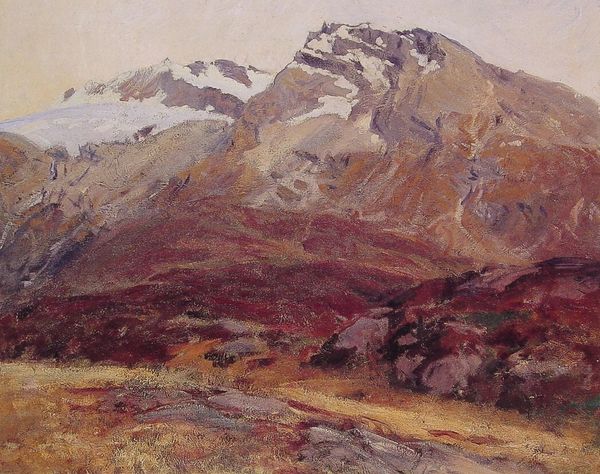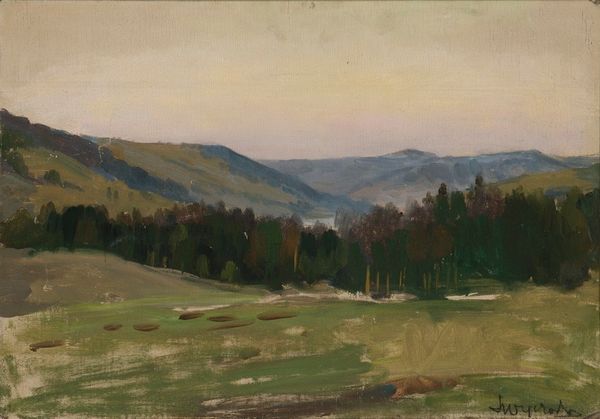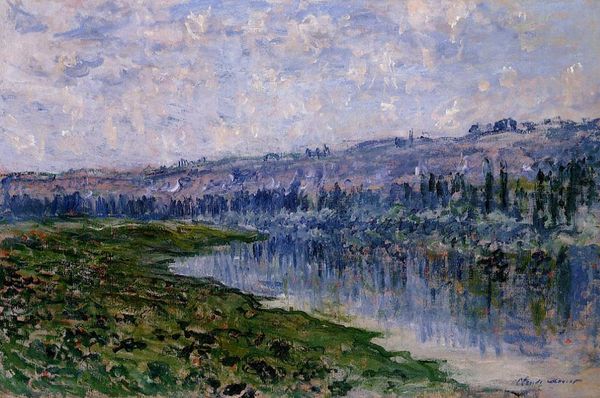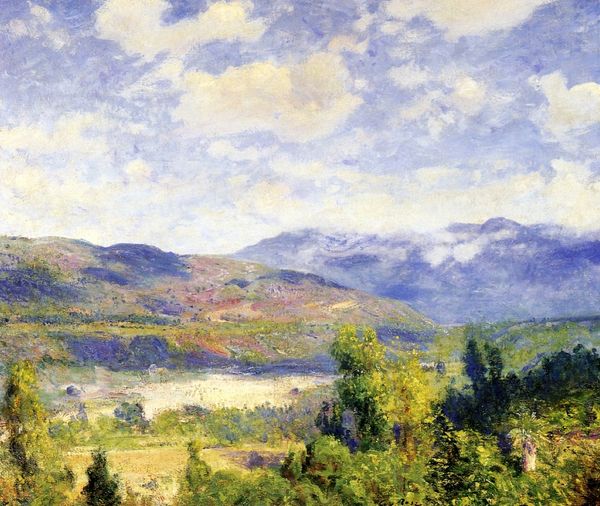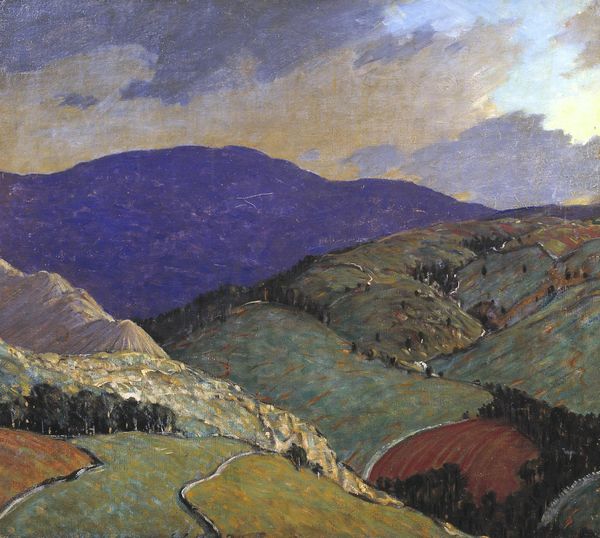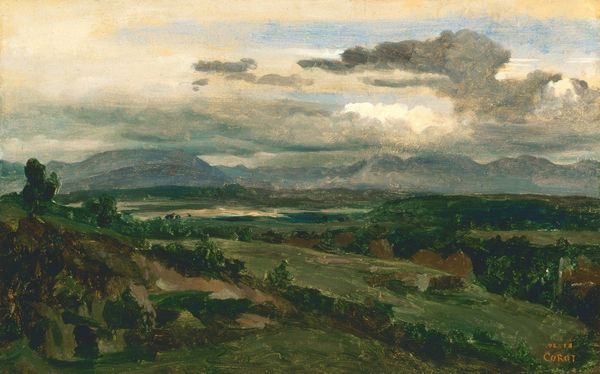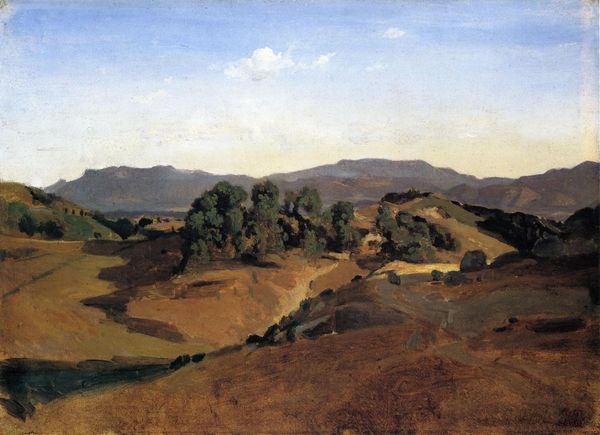
Copyright: Public domain
Curator: Welcome. We are standing before Laszlo Mednyanszky's oil on canvas, "Landscape in the Alps (View from the Rax)," created circa 1900. Editor: Immediately, I'm struck by the overall feeling of subdued grandeur. There’s a cool, almost somber palette. Curator: The composition, particularly the interplay between the foreground and the distant mountains, invites contemplation. Note how the path visually guides our eyes towards the heart of the landscape. Editor: Absolutely. That pathway cuts right through the fraught terrain, highlighting human interventions, however diminutive, into a space claimed by the natural world. Was Mednyánszky critiquing the march of industrial progress through these serene landscapes, perhaps? Curator: While it could be a latent critique, it primarily exemplifies plein-air painting's dedication to immediate, empirical observation and how light changes perception. Look at the contrasts he captures – the rough textures of the mountains versus the softer green of the pasture. Editor: I agree that these contrasting brushstrokes certainly showcase the painting’s formal qualities, but what of the political dimension of the “natural”? I'd point towards how landscapes at the turn of the century often symbolized nationhood, a fraught identity-laden symbol considering the rise of nationalist movements throughout Europe. Mednyánszky himself had complicated loyalties. Curator: Granted, these landscape pieces were created amidst significant social transformation. Mednyánszky seems to avoid simple nationalistic fervor. Instead, his method provides an opportunity for us to contemplate, quite literally, where we stand in relation to the natural world. The formal restraint keeps these ideological frameworks implicit, inviting many avenues for exploration. Editor: Indeed. I leave with a sense of unsettled wonder, as if witnessing a world undergoing constant reformation, and feeling my place in its narrative ever challenged. Curator: A landscape of both observation and meditation, offering continued dialogue through its formal rigor and historical grounding.
Comments
No comments
Be the first to comment and join the conversation on the ultimate creative platform.
